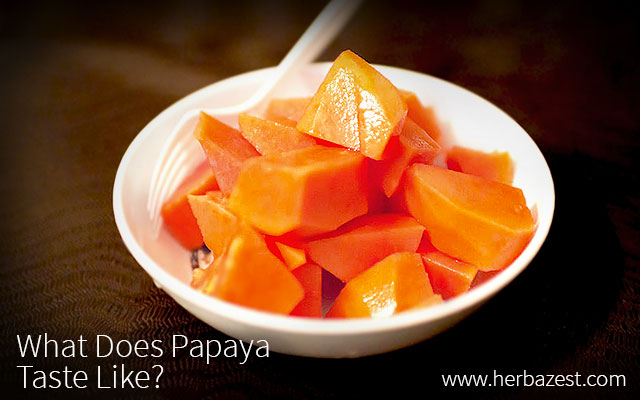The thin-skinned, melon-like fruit of the papaya tree contains hundreds of black, gelatinous seeds, and it is among the top five most traded tropical fruits in the world, thanks to its creamy, succulent flavor.
Papaya Flavors and Varieties
Grown extensively in the tropics, papaya fruits have been around for hundreds of years now. In many regions the crop has been comprehensively studied, and its fruit quality improved. Whereas some earlier, wildly-occurring papaya varieties and types were bland and uninspiring, the commercially-available papayas of today boast enhanced flavor characteristics and generate greater consumer interest.
Such is the case with the world's sweetest papaya, a type of Hawaiian red papaya known as 'Solo Sunrise'. Also nicknamed as 'strawberry papaya', it is a genetically-inbred cultivar whose parents possessed favorable traits such as high sugar content and enhanced resistance against disease. With fragrant notes of berries and melons, this papaya flavor is highly desired on the market for tropical fruits. Meanwhile, with a much looser, honey-like flesh, the 'Waimanalo' papaya is juicy and creamy.
Some other popular Hawaiian cultivars include the 'Kapoho' and 'Rainbow'. Pear-shaped with a rich, golden yellow pulp, these papayas taste like peaches and melons.
As far as large-papayas go, the Cuban-based 'Maradol' is the go-to cultivar. The Maradol papaya taste is perhaps more subtle than Hawaiian varieties, but still sweet. Weighing up to 10 pounds (4.5 k), they are the result of many years of breeding by farmers.
Best Tasting Papayas
Free from injury and fruit decay, a properly-ripened papaya will have a fragrant, yet delicate taste that is reminiscent of a cantaloupe or other type of melon. For most people, papaya flavor is singularly measured according to its content of fruit sugars, which are said to give the papaya its sweetness and pleasant aroma.
Sugar concentration in papayas increases as they mature; however, most papayas intended for commercial export are hand-picked while still only partially-ripe. This is the most practical method of ensuring that the fruits reach consumers before over ripening and spoilage.
Red papayas from Hawaii have a higher concentration of sugars when compared to other varieties, commanding the greatest consumer attention in the entire world market.
Since they cannot develop complex sugars after being picked, ripe papaya fruits that have been allowed to ripen on the tree prior to harvest are the most desirable.
On the other hand, some people prefer the mild, unassuming taste of the unripe, green papaya. Often prepared like a vegetable, these can be dressed up with seasoning herbs and baked as a squash, or added into colorful veggie salads.
Although individual taste buds play a role in papaya flavor, most people will agree that the best-tasting papayas are grown with tender love and care. So stop asking yourself what does a papaya taste like and try the delicious, exotic delicacy for yourself.
Sources
- Joy of cooking, p. 407
- The organic food shopper's guide, p. 147
- University of California, Fruit English, Papaya
- University of Florida, An overview of US papaya production, trade, and consumption
- University of Hawaii, Sunrise solo: A different colored solo papaya | Papaya production in Hawaii | Choices for the consumer
- University of Wyoming, Nutrition and food safety, Papaya power!




